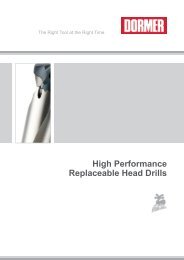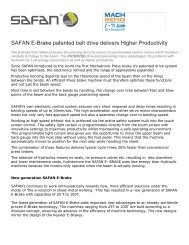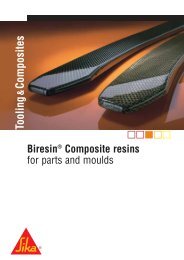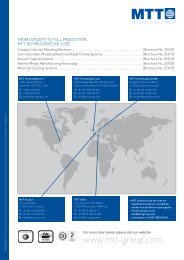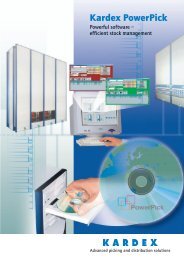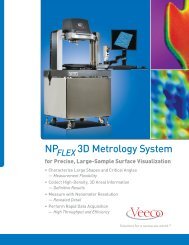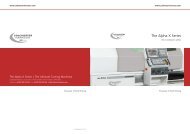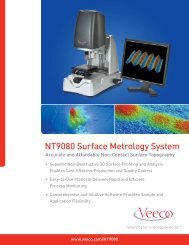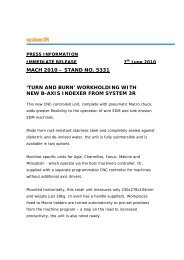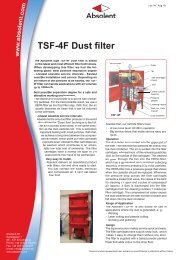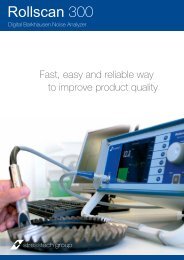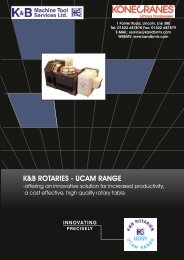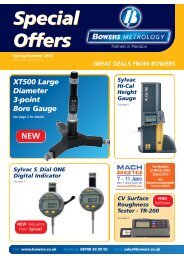DMLS Materials - Technical Specifications
DMLS Materials - Technical Specifications
DMLS Materials - Technical Specifications
Create successful ePaper yourself
Turn your PDF publications into a flip-book with our unique Google optimized e-Paper software.
W H A T I S S L S & F I N I S H I N G<br />
What is Selective Laser Sintering?<br />
SLS is a process of fusing together layers of<br />
powder (eg. Nylon, Glass Filled Nylon or Alumide) into<br />
a 3D model by a computer-directed heat laser. 3D<br />
CAD data of a new product or prototype component is<br />
sliced into layers, and the lasers sinter (melt) the powder<br />
layer by layer. Additional powder is deposited on top of<br />
each solidified layer and again sintered.<br />
The process is self-supporting and parts can<br />
therefore be nested together. The ‘selective’ nature<br />
of the lasers enable complex geometries to be<br />
achieved without compromising on functionality.<br />
SLS provides the highest level of functionality<br />
combined with speed that is currently available.<br />
We are uniquely able to build<br />
prototypes on both EOS<br />
and 3D Systems machines,<br />
boasting some of the world’s<br />
largest SLS machines - four<br />
EOS P700/730s, two EOS P380’s and a 3D Systems HiQ<br />
2500 Plus - thus enabling us to provide the optimal<br />
machine to meet our customers’ requirements. Large<br />
parts are built in single pieces up to a build volume<br />
of 700x380x580mm on the P700/730’s; the reduced<br />
need for joints and post-assembly dramatically<br />
increasing their functionality.<br />
www.3trpd.co.uk<br />
The P380’s allow<br />
parts to be built up to 620x340x340mm, and smaller<br />
parts with finer detail can be produced on the DTM.<br />
What are the finishing options?<br />
The layer based construction techniques<br />
of SLS offer significant benefits in terms of build<br />
speed, however it can sometimes give a<br />
stepped surface finish.<br />
From a purely functional<br />
aspect this is seldom a problem, however<br />
from the aesthetic perspective they may require<br />
additional finishing.<br />
Our skilled team of<br />
finishers combine the<br />
functionality of SLS<br />
parts with high quality<br />
aesthetics, with minimal time added to the delivery.<br />
Providing a range of finishing techniques from simply<br />
adding a colour or highlighting certain areas, to fully<br />
finished marketing models, a finished prototype can<br />
play a vital role in functionality testing, securing tender<br />
bids, design verification and marketing photography.<br />
Furthermore, we have pioneered a low cost method<br />
of improving the visual impact of our prototype<br />
components with a revolutionary colouring<br />
process.<br />
Single parts or large batches can be<br />
supplied in a range of standard colours. Requiring<br />
no surface dressing, this post-process is usually<br />
covered by a flat charge irrespective of parts count.<br />
Assemblies become<br />
clearer and resilience to<br />
handling discolouration is enhanced, giving a far<br />
better communication of design intent.



